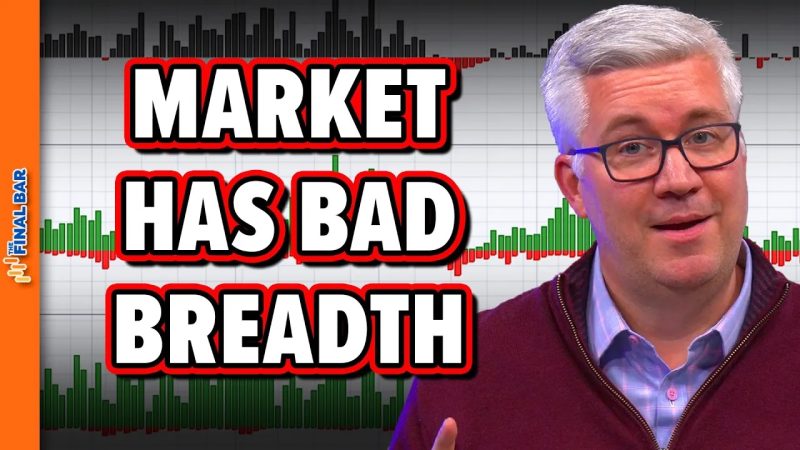
Worried About Market Breadth? Here’s What You Need to Know!
Market breadth is a key metric that investors use to gauge the overall health of the stock market. It refers to the number of stocks advancing versus declining within a given market index. A strong market breadth indicates that a large proportion of stocks are participating in a market rally, suggesting broad-based strength. Conversely, poor market breadth signals that only a few stocks are driving the market higher, potentially hinting at underlying weakness.
One of the primary concerns associated with poor market breadth is the lack of participation from a wide range of stocks. When market gains are predominantly driven by a handful of high-profile stocks, it raises questions about the sustainability of the rally. Such narrow leadership can be a red flag for investors, as it increases the market’s vulnerability to sharp pullbacks if the favored stocks suddenly lose favor.
Additionally, poor market breadth can lead to a lack of diversity in investor portfolios. If only a small number of stocks are driving market gains, investors may become overly concentrated in those particular stocks, exposing them to heightened risks in the event of a market downturn. Diversification is a fundamental principle of investing that helps spread risk across different asset classes and sectors, reducing the impact of individual stock movements on a portfolio.
Furthermore, poor market breadth can be symptomatic of underlying market fragility. A market rally that lacks broad participation may be driven by external factors such as liquidity injections or speculative trading rather than genuine investor confidence in the fundamentals of the market. In such cases, the market becomes susceptible to sudden shifts in sentiment or unforeseen events that can trigger a sharp correction.
Investors should be wary of poor market breadth and take steps to assess the underlying factors contributing to the narrow participation in market gains. Monitoring market breadth indicators such as the advance-decline line and the percentage of stocks trading above their moving averages can provide valuable insights into the breadth of market participation. By staying informed and diversifying their portfolios, investors can mitigate the risks associated with poor market breadth and position themselves more effectively to navigate market uncertainties.
In conclusion, while poor market breadth can be a cause for concern, it also presents an opportunity for investors to review their investment strategies and make adjustments to protect their portfolios. By staying vigilant and maintaining a diversified portfolio, investors can navigate the complexities of the market landscape and make informed decisions that align with their long-term financial goals.
